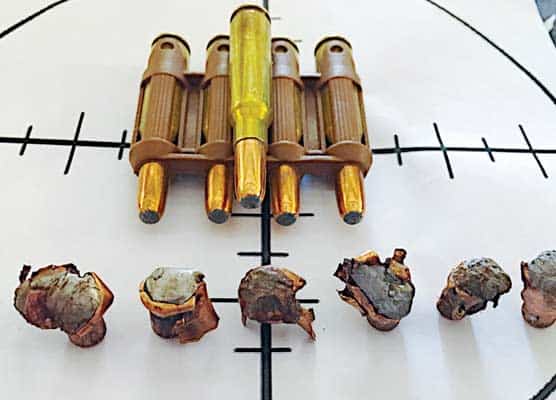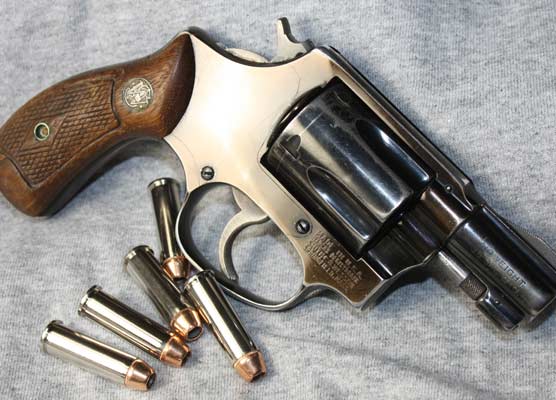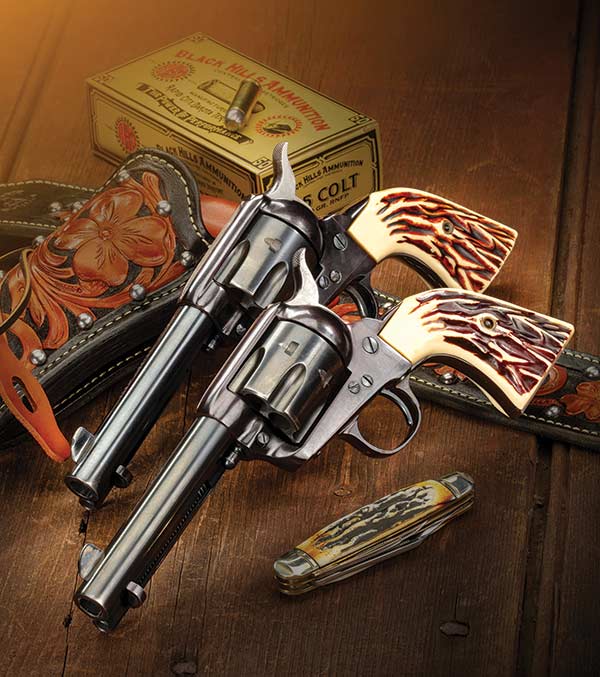21
Primary Hand Grasp
How To Hold The Handgun Is
Foundational To How Well You'll Shoot It
The grasp of the handgun is the interface between you and the machine. If it isn’t right, you’ll never shoot your best. It’s only the gun hand that really controls the pistol or revolver; if the support hand gets there at all, it’s stabilizing the firing hand more than it’s stabilizing the handgun itself. Let’s look at key elements of the primary hand grasp, sometimes called “master grip” or “firing hand hold.”
Virtually every shooting coach and master shooter agrees that your gun’s barrel should be in line with your forearm, and the web of your hand should be high on the backstrap of your revolver, or high and tight into the grip tang of your semiautomatic pistol. The higher the hand, the lower the muzzle vis-à-vis the arm(s) behind it. The closer the axis of the gun barrel is to the line of the radius, the upper bone in your forearm, the less leverage the muzzle will have to climb upon recoil.
Because most designers built their handguns to be held this way, this also means the higher the hand, the more straight-back the natural movement of the trigger will be, reducing downward “jerks” that send the bullet south of its intended point of impact. With auto pistols, a too-low hand position allows so much handgun movement upon recoil that momentum, which should have been running the slide against the rigid abutment of a firmly-held frame, is dissipated, and the slide runs out of momentum. This can result in ejection failures and “stovepipes,” and failures of the slide to return to battery, either of which can prevent the next shot from being fired.
Having the barrel in line with the forearm is important for similar reasons. In that grasp, there are literally feet of flesh and bone directly aligned against the recoil impulse, resulting in surer auto pistol cycling and faster return of revolver or pistol alike to the point of aim. If the hand is twisted on the gun and only the thumb joint is aligned behind the line of recoil—called the “h-grip,” because the hand in this awkward position describes a lower-case letter “h”—the shooter has only a fraction as much “hand and body into the gun.” Recoil once again goes out of control, and reliability of autoloaders will suffer.
Light, Medium, Hard?
Shooting techniques are tools for getting the shots where they need to go, and we must always “tailor the tool to the task.” How firmly to grasp the gun is one of the great, long-standing debates of marksmanship, and the answer is determined by the situation. If the job is to hold a target pistol weighing 2.5 to 3 or more pounds steady against only 2.5 or so pounds of pressure, in a game like American bull’s-eye where “rapid fire” is defined as five shots in 10 seconds, a light hold may be the technique of choice. But if you are firing a hard-kicking S&W Model 340 PD .357 Magnum revolver, with a weight of less than 12 ounces and a trigger-pull weight of close to 12 pounds, and “rapid fire” has turned into five shots in 1 second before Bubba smashes his machete into your head, the game has just changed dramatically. It’s now a different task, requiring a different tool and a different technique.
At one end of the debate, we have light grasp: Makes sense to me for slow target shooting at tiny marks a long distance away. It doesn’t give as much recoil control as harder holds, though. The great master Jeff Cooper was among the few combat shooters who went this way. He advised holding the handgun like a quail: just firmly enough that it wouldn’t fly away, but light enough that you would not crush its delicate body. However, Jeff’s signature gun was the 1911 Government Model, weighing 39 ounces unloaded, and he preferred a 3-pound single-action trigger. That combination is no longer the defensive paradigm.
The middle ground seems to be, hold hard until the hand starts to tremble, and then back off. In modern practical shooting, it has often been quantified as 40-percent strength with one hand, and 60-percent strength with the other, in a 2-hand hold. There is no question national and world championships have been won with this hold. The trick is in keeping pressure consistent.
At the other end of the bell curve is the crush grip, holding as hard as you can and tremors be damned, since when you’re under pressure you can expect the hand to be trembling anyway, so you might as well get used to it sooner than later. Mild tremors are the downside, but the upside is improved recoil control, and the fact that if an opponent tries to snatch your weapon, the harder you were holding at the outset, the less likely you are to be disarmed. In competition shooting, the great world champion Rob Leatham is on record as saying he holds his Springfield pretty much as hard as he can. Bob Vogel, the IDPA World Champion, is famous for his crushingly powerful grip on his Glock, and the late, great gunfighting instructor Rex Applegate advocated a super-hard hold he called “convulsive grip.”
“Tailor the tool to the task!” My day job is training people to use guns under stress, and my hobby is competition shooting. In each I advocate a crush grip. It has won me 1st place awards in six of the last eight practical shooting matches in which I’ve competed. But, as they say on the Internet, YMMV: “Your Mileage May Vary.” In the end, every component of marksmanship is about what works for the individual, not what works for the instructor, writer, or other third party who may be dispensing the advice.
The thing is, though, that you don’t know what works for you until you try every technique out there, and find out for yourself.

Sign up for the Personal Defense newsletter here:






